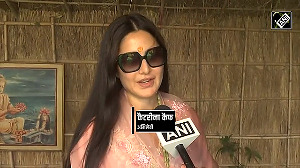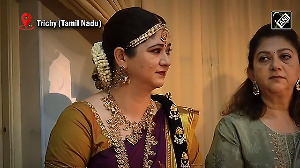Following is the chronology of important developments in the history of Nepal, which became a republic on Wednesday.
1768: Shah dynasty begins after Gurkha ruler Prithvi Narayan Shah conquers Kathmandu and lays foundations for a unified kingdom.
1792: Nepalese aggression halted by defeat at hands of Chinese in Tibet.
1814-16: Anglo-Nepalese War; culminates in treaty which establishes Nepal's current boundaries.
1846: Jang Bahadur Rana becomes prime minister. Establishes the hereditary rule of Ranas.
1923: Treaty with Britain affirms Nepal's sovereignty.
1946: Nepali Congress party established.
1948: First Constitution of Nepal promulgated.
1950: King Tribhuvan, present King Gyanendra's grandfather, flees to India after falling out with the Ranas. Ranas implicate him in a conspiracy against them. Anti-Rana forces based in India form alliance with monarch.
1951: End of Rana rule. King Tribhuvan restored.
1955: King Tribhuwan dies, King Mahendra ascends throne.
1959: Multi-party constitution adopted.
1960: King Mahendra seizes control and suspends Parliament, Constitution and party politics after Nepali Congress wins elections with B P Koirala as premier.
1972: King Mahendra dies, succeeded by Birendra.
1980: Constitutional referendum follows agitation for reform. King agrees to allow direct elections to national assembly, but on a non-party basis.
1985: Nepali Congress begins civil disobedience campaign for restoration of multi-party system.
1989: Trade and transit dispute with India leads to border blockade by New Delhi.
1990: Pro-democracy agitation co-ordinated by Nepali Congress and Leftist groups. King Birendra bows to pressure and proclaims a new Constitution establishing multy-party democracy under constitutional monarchy.
1991: Nepali Congress wins first democratic elections. Girija Prasad Koirala becomes prime minister.
1994: Koirala's government defeated in no-confidence motion. New elections lead to formation of Leftist government.
1995: Communist government dissolved.
1995: Maoists launch armed agitation to abolish monarch and establishing people's republic.
1997: Prime Minister Sher Bahadur Deuba loses no-confidence vote.
2000: G P Koirala returns as prime minister.
June 2001: King Birendra, Queen Aishwarya and other close relatives killed in shooting spree by drunken crown prince Dipendra, who then shoots himself. Prince Gyanendra becomes king.
July 2001: Maoist rebels step up violence. Premier Koirala quits over the violence; Sher Bahadur Deuba becomes prime minister.
November 2001: State of emergency declared after more than 100 people are killed in four days of violence. King Gyanendra orders army to crush the Maoist rebels.
May 2002: Parliament dissolved, fresh elections called amid political confrontation over extending the state of emergency. Sher Bahadur Deuba heads interim government.
October 2002: King Gyanendra dismisses Deuba and indefinitely puts off elections set for November. Lokendra Bahadur Chand appointed as prime minister.
January 2003: Rebels, government declare ceasefire.
May-June 2003: Lokendra Bahadur Chand resigns; king appoints Surya Bahadur Thapa as new premier.
August 2003: Rebels pull out of peace talks.
May 2004: Prime Minister Surya Bahadur Thapa resigns following weeks of street protests by opposition groups.
June 2004: King Gyanendra reappoints Sher Bahadur Deuba as prime minister with the task of holding elections.
February 1, 2005: King Gyanendra dismisses Prime Minister Deuba and his government, declares a state of emergency.
April 30, 2005:King lifts the state of emergency.
November 2005:Maoist rebels and main opposition parties agree on a programme intended to restore democracy.
April 2006:King Gyanendra agrees to reinstate Parliament following weeks of violent strikes and protests against direct royal rule. G P Koirala is appointed as prime minister. Maoist rebels call a three-month ceasefire.
May 2006:Parliament votes unanimously to curtail the king's powers.
16 June, 2006:Prachanda and premier Koirala hold talks.
November 2006:The government and Maoists sign a historic peace accord.
January 2007:Maoist leaders enter parliament under the terms of interim Constitution.
April 2007:Maoists rebels join interim government.
May 2007:Elections postponed to November.
September 2007:Maoists quit interim government to press demand for monarchy to be scrapped.
October 2007:Elections are again postponed.
December 2007:Parliament approves abolition of monarchy as part of peace deal with Maoists, who agree to re-join government. Mainstream parties and the Maoists agree to hold elections by mid-April 2008.
April 10, 2008: Nepal votes in elections for a Constituent Assembly to rewrite the country's Constitution. The Maoists win 220 of 601 seats in the elections.
May 27, 2008: The new Constituent Assembly is sworn in.






 © 2025
© 2025